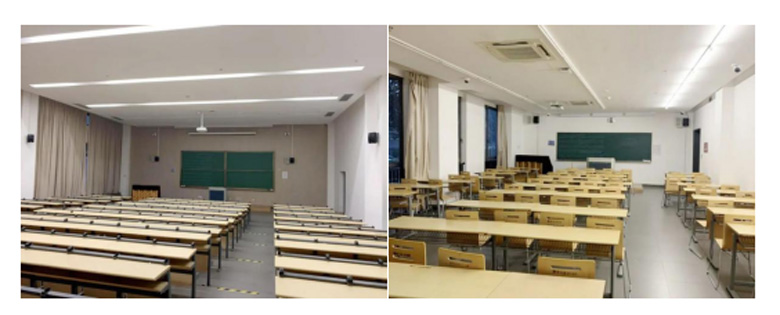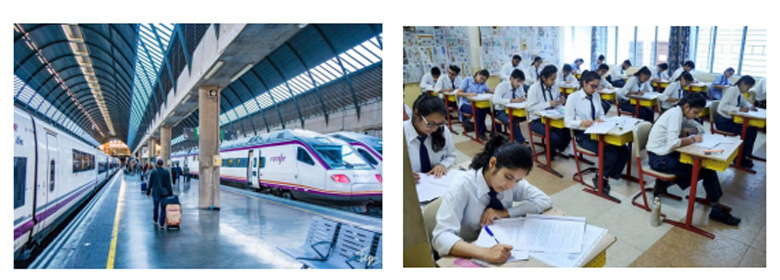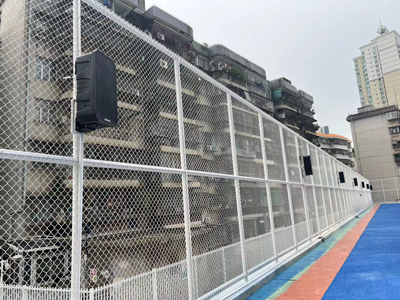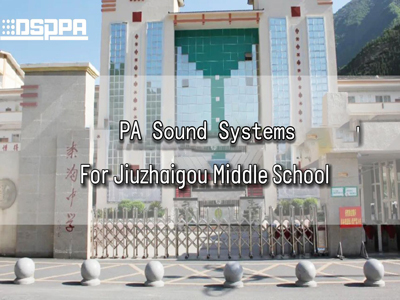 Demandas do projeto
Demandas do projetoCombinado com a configuração atual da sala de exame, o ZJCM precisa transformar 119 salas de exame cultural na área sul em salas de exame padronizadas para que a arte atenda aos requisitos dos exames profissionais de música e dança.
Ao mesmo tempo, tendo em conta as necessidades do ensino diário, o sistema de radiodifusão do campus recém-construído deve
Não apenas garantir que a música em 119 salas de aula para exame seja completamente sincronizada sem demora, com transmissão de som estéreo de alta fidelidade e arquivos de áudio de exame compactados sem perdas, mas garanta que ele pode reproduzir arquivos de áudio de ensino estéreo localmente em cada sala de aulaPara atender às necessidades de exames e ensino diário dos professores.
 Design de solução
Design de soluçãoEm resposta às necessidades do Conservatório de Música de Zhejiang, a equipe DSPPA adota o sistema de PA de rede Dante original sem latência da indústria e projeta
Um sistema de transmissão de campus sem latência que suporta transmissão de áudio estéreo e de alta fidelidadePara suas salas de exame padronizadas.
Para obter o efeito da transmissão estéreo, a DSPPA instalou 2 alto-falantes de rede para cada sala de aula de sala de exame. Durante o período de exame, o servidor de transmissão na sala central do computador pode coletar fontes de áudio estéreo para a transmissão do programa. Além disso, cada sala de aula está equipada com um conjunto de sistema de microfone de ensino. No ensino diário, ele pode gerar a fonte de áudio estéreo através do computador da sala de aula ou da máquina de fonte de áudio para realizar o reforço de som de ensino local com qualidade de som no nível do CD.
 Diagrama de conexão do sistema
Diagrama de conexão do sistema Efeitos do projeto
Efeitos do projetoCom os protocolos Dante e DSPPA, o sistema PA de rede sem latência DSPPA tem um atraso de rede não superior a 34 μs em circunstâncias ideais. No entanto, a maioria dos sistemas de PA de rede baseados no protocolo TCP/IP no mercado tem um atraso de rede de cerca de 70ms, o que é cerca de 2.000 vezes o de um sistema de PA de rede sem latência! Ele suporta amostragem de 16 bits a uma taxa de amostragem de 48kHz, alcançando verdadeiramente a qualidade de som em nível de CD. Ao mesmo tempo, é também o único sistema de transmissão na indústria que suporta a reprodução de arquivos de música compactados sem perdas em wav. Formato. Portanto, este sistema de PA de rede sem latência resolve perfeitamente o atraso de rede do sistema de PA de rede tradicional, garantindo que os arquivos de áudio transmitidos nas 119 salas de aula da faculdade sejam completamente sincronizados durante o exame, e atendendo aos requisitos para a construção de uma sala de exames padronizada para o art.

 Vantagens do sistema
Vantagens do sistema1. Transmissão sem latência, sincronização em tempo real de todos os terminais
O sistema IP PA tradicional tem uma alta latência (cerca de 70ms), e a reprodução do programa terminal não está completamente sincronizada, enquanto o sistema PA de rede sem latência tem uma latência muito baixa (apenas 34 μs), o que garante que todo o áudio do terminal de transmissão seja completamente sincronizado.
2. com qualidade de som de alta fidelidade e efeitos de nível de CD
Ele pode suportar amostragem de 16 bits a uma taxa de amostragem de 48kHz e reprodução de música compactada sem perdas em wav. Formato, realmente alcançando a qualidade de som de alta fidelidade de nível de CD.
3. suporte de transmissão estéreo de dois canais
Os sistemas PA tradicionais são todos de reforço de som de canal mono, enquanto os sistemas PA sem latência podem obter coleta e transmissão estéreo para reforço de som profissional.
4. com a maioria das funções do sistema de rede PA tradicional
Ele tem funções como transmissão de tempo, ligação de fogo, alarme de uma tecla, paging remoto, interfone para ajuda, controle remoto de PC e controle de aplicativo móvel.
5. apoiar o desenvolvimento secundário para atender às necessidades individuais
O sistema pode ser personalizado de acordo com as necessidades individuais do projeto, e também suporta a conexão do sistema de desenvolvimento secundário.
6. forte escalabilidade
O sistema suporta o acesso de outros equipamentos de protocolo Dante para expansão do sistema e integração da plataforma.
Aplicações:
Este sistema é aplicável a shoppings, fábricas, hotéis, aeroportos, docas, cidades universitárias, escolas, reunião em grande escala siTes (como Expo Park), estádios esportivos, parques industriais, parques, trânsito ferroviário e rodovias, instituições médicas, etc.











 DSPPA | Alto-falante direcional DSP350F para um playground escolar em ShenzhenAugust 27, 2024Resumo: Nossos alto-falantes direcionais DSP350F fornecem áudio preciso em todo o campus, aumentando a eficiência educacional e a qualidade do campus.view
DSPPA | Alto-falante direcional DSP350F para um playground escolar em ShenzhenAugust 27, 2024Resumo: Nossos alto-falantes direcionais DSP350F fornecem áudio preciso em todo o campus, aumentando a eficiência educacional e a qualidade do campus.view DSPPA | Sistema de som PA para um parque infantil escolarFebruary 22, 2023Resumo: O sistema de som DSPPA PA foi aplicado à Jiuzhaigou Middle School.view
DSPPA | Sistema de som PA para um parque infantil escolarFebruary 22, 2023Resumo: O sistema de som DSPPA PA foi aplicado à Jiuzhaigou Middle School.view